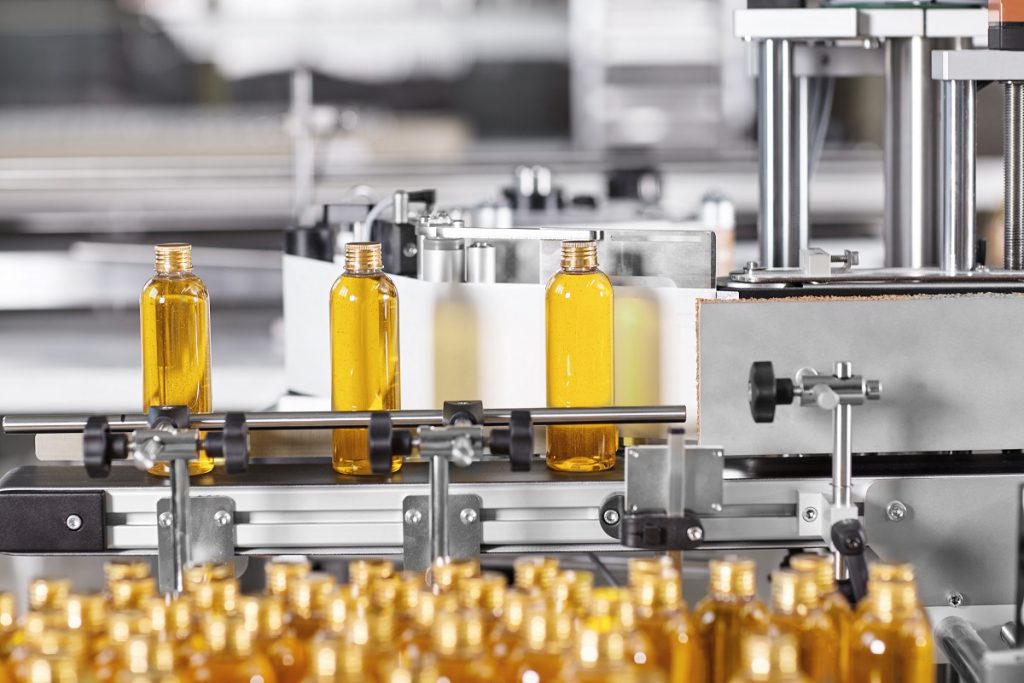- To avoid expensive and hazardous leaks, utilize appropriate storage tanks.
- Use collapsible containers to save space and make transporting and storing products more efficient.
- To ensure the best performance, it’s important to put in place safety measures such as temperature control, accurate labeling, and frequent cleaning.
- Increase your capacity and reduce the risk of accidents by automating material handling processes.
The liquid manufacturing industry is one of the most important industries worldwide. It produces various products, from food and beverages to pharmaceuticals and chemicals. Proper storage and handling are essential for maintaining quality control throughout production.
To ensure these processes run smoothly, following best practices when storing and handling liquids in this industry is important. This article will provide tips on properly storing and handling liquids in the liquid manufacturing industry for maximum efficiency.
Use the right type of storage tank.

In the liquid manufacturing industry, using the right type of storage tanks is crucial for proper storage and handling procedures. This is not only a regulatory requirement but also ensures the safety of workers and the environment. One important aspect of properly utilizing storage tanks is choosing a high-quality 2-inch banjo fitting.
This fitting provides a secure and leak-proof connection between the tank and the transfer hose or pipe. It is durable and can withstand high pressure and extreme temperatures. Investing in a reliable banjo fitting can prevent costly and dangerous leaks, which can occur if a low-quality fitting is used or is not installed correctly.
In summary, using the appropriate storage tanks and fittings is paramount for the liquid manufacturing industry. An expert approach to selecting and installing these components is necessary for optimal performance and safety.
Use collapsible containers for better space utilization.
Collapsible containers are an innovative solution transforming how products are transported and stored in the liquid manufacturing industry. These containers are designed to expand when in use and collapse when not in use, which makes them an exceptional space-saving solution. Collapsible containers ensure products are transported and stored efficiently without damage or loss.
Collapsible containers can help manufacturers safely and securely store bulk products, raw materials, and finished goods. Moreover, it optimizes space, improves operational efficiency, and reduces costs in the long run by decreasing the demand for unnecessary transportation. Employing the right storage and handling practices is crucial in streamlining manufacturing processes and ensuring better outcomes.
Implement safety measures properly.
Implementing safety measures properly is essential when you are dealing with liquids. Here are some tips on how to do this:
Keep a close eye on the temperature.

Maintaining an optimal temperature is crucial for preserving the quality of liquid products in the manufacturing industry. Proper temperature control procedures that are closely monitored can eradicate any potential risks associated with product spoilage or bacterial growth. It is a widely accepted industry standard to employ temperature sensors and monitoring systems that help track the temperature of the product in the manufacturing process.
This information can be used to ensure all storage and processing stages comply with the required temperatures. Ultimately, this ensures the product is high quality and safe for end-users. Careful temperature management is essential to the liquid manufacturing industry and vital to product quality and customer satisfaction.
Ensure proper labeling for each liquid container.
Proper labeling is a crucial aspect of safe liquid manufacturing procedures. Ensuring that each container is labeled correctly meets regulatory requirements and prevents confusion and potential danger during storage and handling. Proper labeling includes information such as the contents of the container, the date it was filled, and any necessary safety information.
This allows individuals handling the liquid to identify its contents easily, preventing confusion and possible accidents. Additionally, labeling ensures that the manufacturer can track and maintain quality control, ensuring that each batch is produced and handled correctly. In summary, proper labeling is a fundamental aspect of safe liquid manufacturing procedures that benefits both the manufacturer and the individuals handling the liquid.
Make sure to clean all parts regularly.
Proper storage and handling procedures are essential in the liquid manufacturing industry. One of these procedures is ensuring that all parts are regularly cleaned. This includes all equipment used in the manufacturing process, such as tanks, pipes, and valves. The reason for this is simple: if parts are not cleaned regularly, there is a risk of contamination.
Contaminants can come in many forms, including bacteria, mold, and dirt. If these contaminants remain on equipment, they can grow and multiply, potentially contaminating the entire manufacturing process. This can result in product and revenue loss and damage the company’s reputation. Therefore, regular cleaning of all parts is crucial in manufacturing to ensure producing high-quality, safe, and effective liquid products.
Optimize material handling efficiency through automation.
Optimizing material handling efficiency through automation is a crucial aspect of the manufacturing process. This process in the liquid manufacturing industry involves using various technologies and equipment, such as conveyors, automated storage and retrieval systems, and robotic arms. The aim is to enhance efficiency, increase capacity, and reduce the risk of accidents.
The importance of this procedure cannot be overstated, as it ensures that the materials are handled and stored effectively and efficiently. This, in turn, leads to reduced errors, increased productivity, and, ultimately, improved profitability. By automating the handling process, manufacturers can concentrate on other critical aspects of their operation, leading to positive results for their business.
These are some tips manufacturers should consider when properly storing and handling liquids in the liquid manufacturing industry. Adhering to these guidelines can guarantee efficient, safe, and compliant operating practices.

